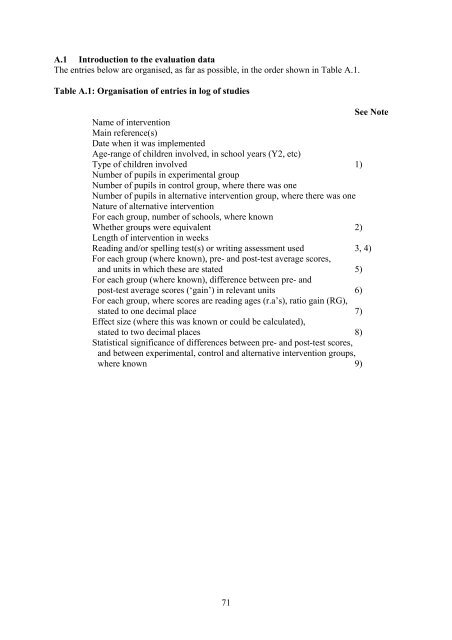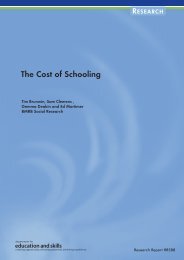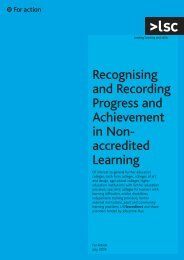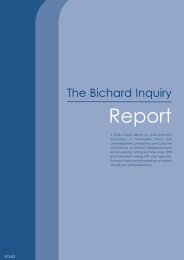What Works for Children with Literacy Difficulties? - Digital ...
What Works for Children with Literacy Difficulties? - Digital ...
What Works for Children with Literacy Difficulties? - Digital ...
Create successful ePaper yourself
Turn your PDF publications into a flip-book with our unique Google optimized e-Paper software.
A.1 Introduction to the evaluation data<br />
The entries below are organised, as far as possible, in the order shown in Table A.1.<br />
Table A.1: Organisation of entries in log of studies<br />
See Note<br />
Name of intervention<br />
Main reference(s)<br />
Date when it was implemented<br />
Age-range of children involved, in school years (Y2, etc)<br />
Type of children involved 1)<br />
Number of pupils in experimental group<br />
Number of pupils in control group, where there was one<br />
Number of pupils in alternative intervention group, where there was one<br />
Nature of alternative intervention<br />
For each group, number of schools, where known<br />
Whether groups were equivalent 2)<br />
Length of intervention in weeks<br />
Reading and/or spelling test(s) or writing assessment used 3, 4)<br />
For each group (where known), pre- and post-test average scores,<br />
and units in which these are stated 5)<br />
For each group (where known), difference between pre- and<br />
post-test average scores (‘gain’) in relevant units 6)<br />
For each group, where scores are reading ages (r.a’s), ratio gain (RG),<br />
stated to one decimal place 7)<br />
Effect size (where this was known or could be calculated),<br />
stated to two decimal places 8)<br />
Statistical significance of differences between pre- and post-test scores,<br />
and between experimental, control and alternative intervention groups,<br />
where known 9)<br />
71

















